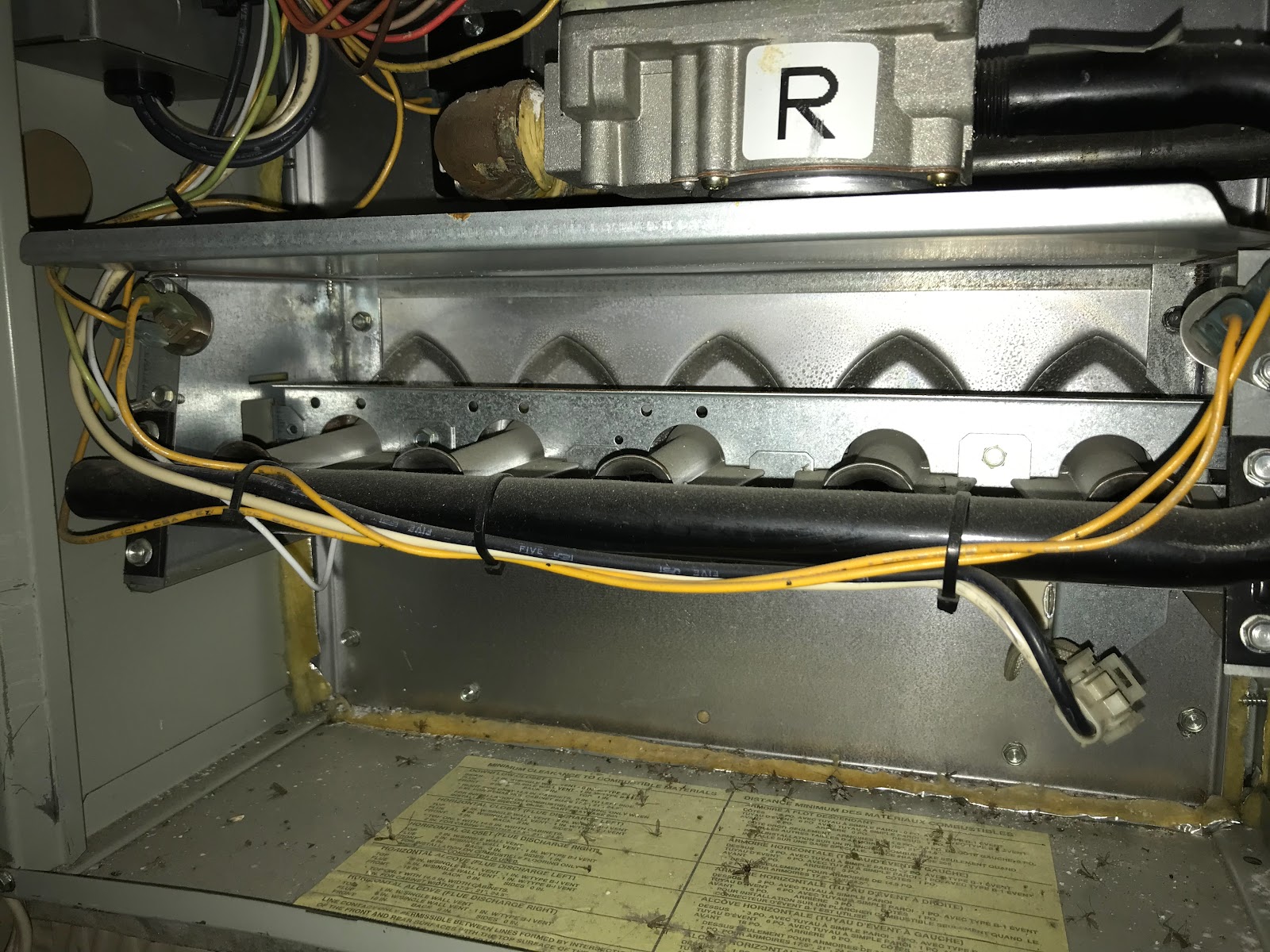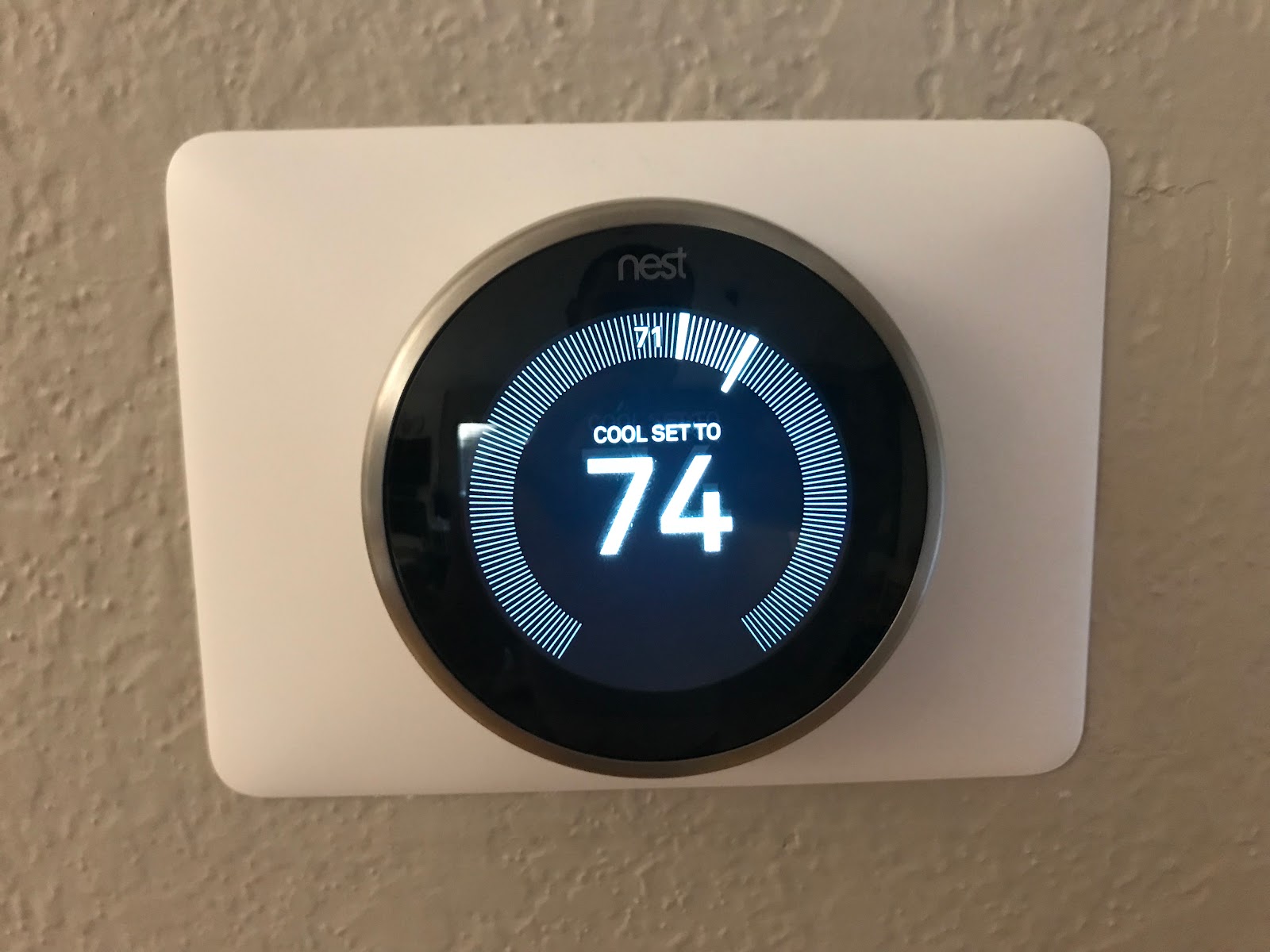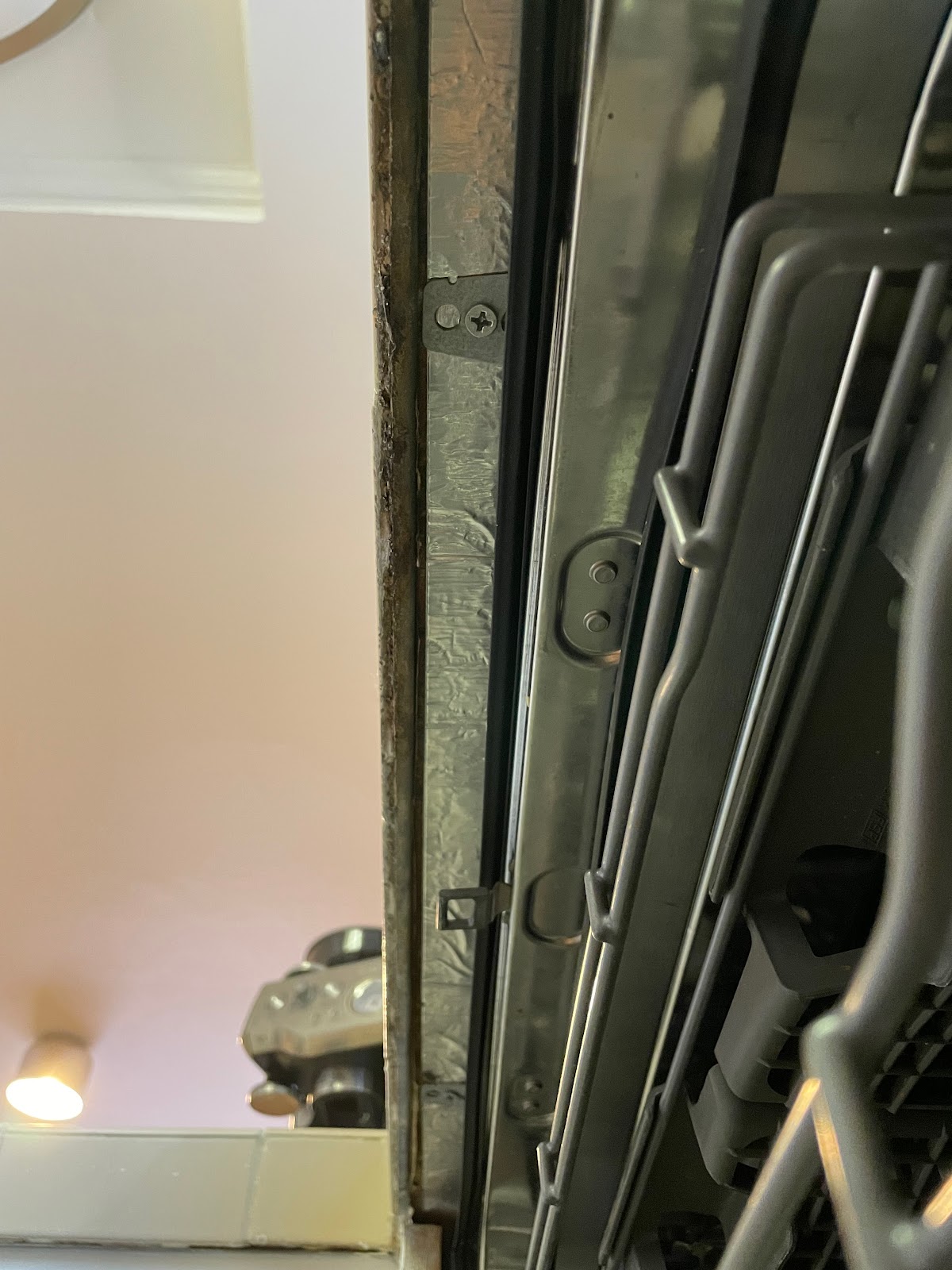Furnace Fan Control Mystery- Solved
When we first moved into our house, one of the first upgrades we tried was to replace the HVAC thermostat with a nifty Nest unit. We thought it was working fine until we got the energy bill for that first month (over $300). Our Trane XL80 two-stage furnace seemed to be doing a good job keeping the house warm, yet appeared to be working too hard to accomplish that (it would be on for long stretches of time). That's when I started to pay close attention to how the furnace was behaving. Whenever it started I would head to the garage and just watch and listen to the unit operate. I would head back into the house and stand under the intake and listen. It didn't take long to learn that the unit was shutting off and restarting multiple times even before reaching the temperature set point. But why? Why was it taking so many breaks? I removed the front panel of the furnace to reveal its insides:
In the top left corner exists the White-Rodgers Model 50A51-495 control board. On it there is a single red led light. This is used as a diagnostic indicator to let you know if there is an issue. 2 consecutive flashes meant one thing, 4 meant another. Thankfully I didn't have to guess as the label on the board has a table with this info. My problem was that the Thermal Protection Device was open. But what did this mean? Thermal Protection? Did the unit get too hot? Did the unit get too cold? (scratch that- cold is never a problem- its almost always heat). But what part of it was getting too hot? I followed the line from the control board to the Thermal Protection Device- it was near the burners. So that part of the furnace was overheating and causing this switch to open and shut down the furnace- but why? Burners are supposed to be hot.
Then I decided to continue to watch the unit operate with the panel cover off, and that's when I learned this: When the Nest calls for heat, the burners would come on, and the circulation fan would start. Sooner or later the fan would kick off, and the burners would continue to burn until one of the thermal protection devices opened (sensed that the unit was overheating). This made sense. The fan is what pulls air from inside the house, pushes past the hot part of the furnace, picks up the heat, and re-enters the house to warm it up. If the fan turns off, there is no moving air to pick up that heat from the burners. Then heat builds up and the protection device senses this.
But why? Why was the fan turning off? This is when I decided to apply this troubleshooting question. What changed recently? The Nest was installed. Maybe the settings on it needed to be changed. Maybe it it configured for another type of furnace and sending the wrong signal? Changed some of the settings on the Nest- same problem persisted. Maybe there is a problem with the way the Nest is powered? Old thermostats have their own batteries to keep them powered. Nests take power from the furnace control board. Maybe it didn't like this. I checked the power supply to the Nest. I checked the power at the control board. Everything was per specifications. I consulted the Nest troubleshooting guide to no avail. At that point I was curious about what would happen if I installed the original Trane battery powered thermostat. Upon first try the problem was gone. The furnace ran smoothly and the fan did not turn off. Well, thats weird- but at least it works. At this point I had exhausted all other options so I decided to keep using it and put the Nest away for future use.
It was smooth sailing for a couple of months before the problem started happening again. This is one of the worst troubleshooting scenarios to be in. You thought you had it fixed. You went back to original design. Now that doesn't even work. Feels like I wasted time. But whadayagunnado?- thats life. Went back to the drawing board. Removed the furnace panel again. Took a closer look at the board- Could it be the wiring? Could one of the wires be bad? Completed a continuity check- all good. What about the settings? There are some dip switches on here that can be adjusted to control fan run time. Could they be causing this? Tried every iteration- no change. What about the board? Could it be bad? Probably not- otherwise the diagnostic indicator would've have shown me that. Could it be the wiring connectors? For a while I went on a wild goose hunt for some Molex connectors before I gave up on the idea (seemed like a low probability fix). This whole time, I had been perusing the different online forums/blogs on HVAC repair, looking for any useful details. For months I didn't really find anything useful until I read a tip that suggested that some people who have issues with their fan should check the relay inside the board to see whether it is damaged or burnt. This is the device that the control board uses to actually control the fan turning on and off. I would have to remove the cover on the board to expose it, which I only did after unplugging the unit to ensure it was completely de-energized.
Uncovering the circuit board inside the controlled was quite easy. I removed the screws that head the board in place and used a screw driver to pry the back cover off, and that's when I saw it. A dark brown burnt spot on the back of the circuit board.
Is this what was causing my problems? Very likely. Even if it wasn't- is it something to be addressed? Absolutely. At times like this, it is unnecessary to speculate when you already have your work cut out for you and it's a definite improvement. Sure you can trace the location of the spot- in my case it was located behind a series of resistors. But was this the cause of the whole issue? Or is it the effect of a different master cause? In this case, I applied the replace and see strategy. I replaced the board with its modern version to see if it fixes it. I also reinstalled the Next thermostat.
It was an immediate success. Not only does it run uninterruptedly, it is synced with the Alexa app and runs when I literally tell it to! Will we ever learn the relationship between the burnt component and weird behavior of the circulation fan? Probably not. Anyways, it isn't worth investigating when there are other projects waiting to be worked on! Case Closed! On to the next one...










Comments
Post a Comment